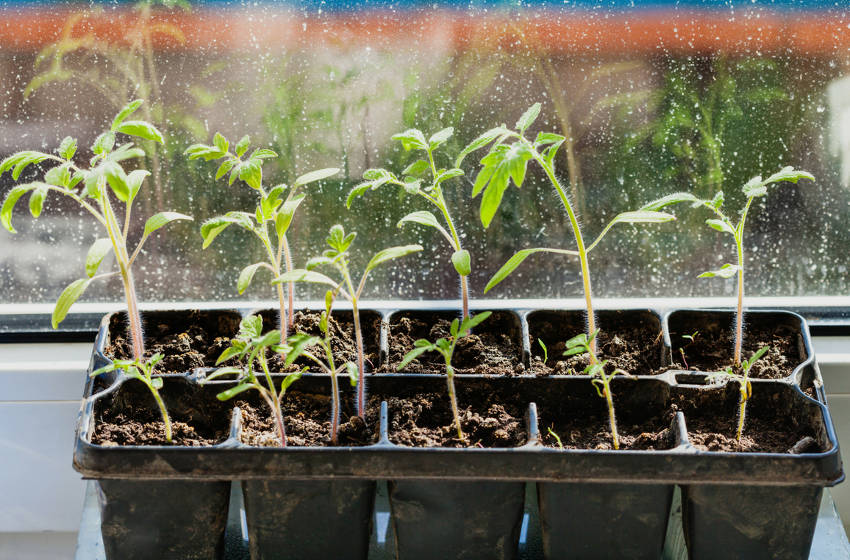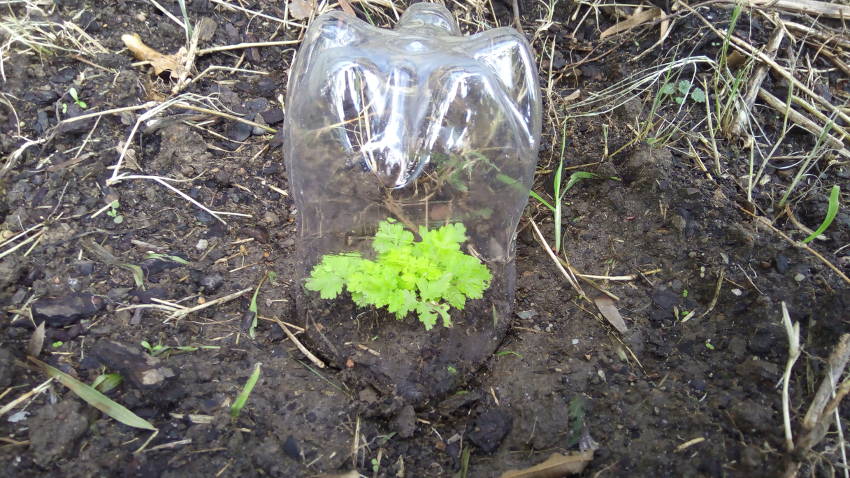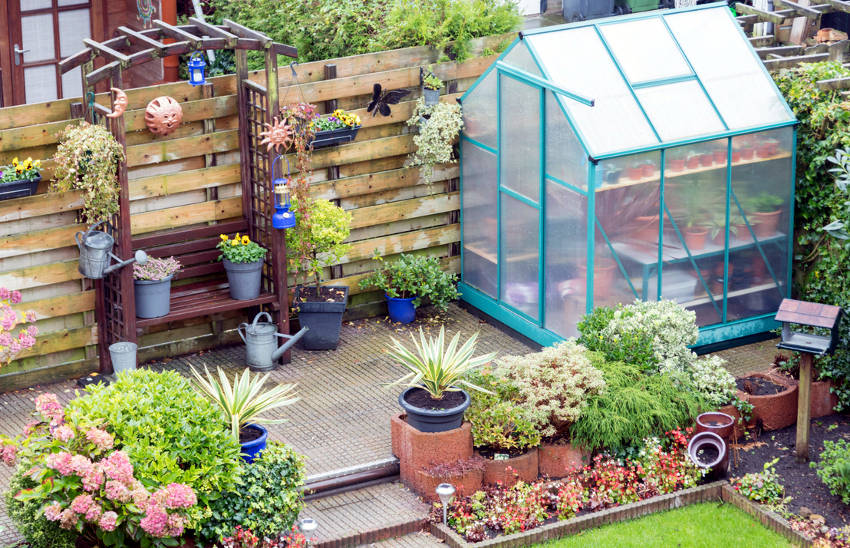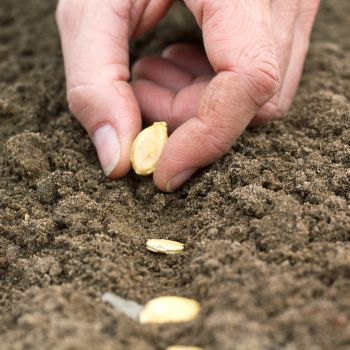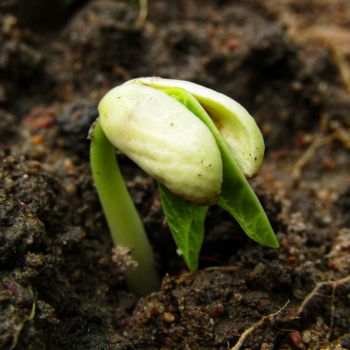There's a whole world of plants out there, and few gardeners stick to species which are purely native to their area. While this is great for increasing variety in your garden, it does have the downside of some plants being a little unhappy in their adopted locations.
In particular, some varieties which evolved in hotter climates might germinate successfully in cooler ones, but will require longer months of sunshine and warmth to thrive and ripen. This can present a problem if your frost-free growing season is shorter than ideal.
But determined gardeners rarely let such difficulties stand in their way. Sowing seeds a little early under carefully controlled conditions can add a month or more to a plant's productive life. This is especially helpful for annuals which need to complete a cycle within a single growing season. Some common examples of these include:
Rosella - Also known as Jamaica sorrel, this fruit-bearing plant needs around six months of frost-free weather to ripen. Such a lengthy growing season is far from guaranteed in temperate climates, and so a head start of a few weeks is extremely useful.
Chillies and Capsicums - As natives of the tropics, chillies and capsicums grow best in plenty of warmth over several months. They also require a lengthy germination period, further eating into the available growing season. And lastly, picking ripe chillies encourages new fruit growth, and so an extended harvest will increase your total crop.
Tomatoes - Although they're relatively quick to flower and bear fruit, tomatoes can be reluctant to ripen. A head start of a few weeks will help get them onto your plate earlier in the season.
If you want to make it easier to grow annuals that hate frost and love sun, there are three main ways of sowing the seed in late winter to steal a march on spring.
Indoor Sowing
Early sowing of seeds on a sunny windowsill is the time-honoured method of forcing a few extra weeks into the growing season. It has the advantage of providing guaranteed frost-free conditions, but also has a few drawbacks you need to keep in mind.
Firstly, even the brightest windowsill can't compete with the amount of light given by a sunny outdoor location. Seeds started off indoors will tend to react to the relatively shady conditions by reaching upward in search of stronger direct light.
This means they grow faster than is ideal, turning 'leggy' with weakened, spindly stems. If this goes too far before the seedlings are planted out, the plant will likely never recover full vigour.
Also, the lack of a breeze indoors means mould and fungal diseases can be a problem. For example, damping off is a disease which can quickly kill seedlings, and is a particular risk for indoor sowings in still, warm, wet air.
However, these drawbacks can be largely avoided by careful planning and taking a few precautions.
- Don't sow your seeds too early. Depending on the germination period, around four to six weeks before the last expected frost is enough to give your plants a head start without risking legginess.
- Use a sterile growing medium and clean containers to reduce the risk of fungus. Either buy ready-sterilised compost, or create your own by heating some garden soil in your oven.
- Water regularly and lightly, avoiding soaking, and water the soil rather than the plant to reduce the risk of mould.
- Place your seedlings in the sunniest spot you can, or consider using artificial lighting with broad-spectrum bulbs.
Once the risk of frost has passed, your seedlings should be large enough to plant out. It's important to minimise the shock of moving them outdoors by using a process known as hardening off.
Beginning about a week before transplanting, start putting the seedlings outside in a partially sunny, sheltered location during the day, taking them indoors again in the evening. Gradually move their daytime location toward the final planting spot, to help the seedlings acclimatise to their new growing conditions.
Importantly, pay extra attention to watering during this process. The containers can dry out much more quickly outdoors, but you still want to avoid waterlogging the pots.
Early Sowing in the Greenhouse
The second method for starting seeds early is to sow them under glass. This can be done in a traditional greenhouse or a plastic mini-greenhouse.
The process is similar to sowing indoors, with a few notable differences.
- Unless you have a heated greenhouse, the temperature will likely be more variable, and heavy frosts can still be dangerous. Because of this, sow seeds a week or two later than indoors to minimise the risks.
- Most greenhouses will have higher levels of natural light, and so legginess won't be as much of a problem. However, this can also mean daytime temperatures soar on sunny days.
- The hardening off process is more straightforward, as there's less difference in conditions. In many cases, opening the greenhouse doors and windows during the day is enough.
- A greenhouse will likely give you more space to start off a greater variety of seeds.
Early Sowing Under Cloches
The final method is to sow your seeds in their final location, but provide some protection from the early spring elements. This is done by using cloches, which are basically tiny greenhouses covering one or two seedlings at a time. The idea is that this creates a warmer atmosphere than the open air, while also warming the soil to encourage germination.
You can buy heavy glass cloches which look great and will last for years, but they can be expensive. It's just as effective to use half a plastic drinks bottle with the cut edge buried a few centimetres into the soil.
The main drawback with cloches is that they provide far less protection, and should only be used to add a couple of weeks to the growing season. To get the most out of them, put the cloches in place a week before sowing, to give the ground chance to warm a little first.
Cloches can also make watering difficult, as getting water to the seedlings often lets the warm air escape, defeating the purpose. At the other extreme, an unexpectedly sunny day can quickly scorch tender seedlings in such a small confined space.
Nonetheless, cloches are useful if you're short of indoor or greenhouse space. They're also a good option for hardening off seedlings which are starting to get leggy a little earlier than expected.
Plants which have developed in your local area will always be the easiest to grow. However, part of the gardener's art is to provide ideal conditions for a variety of seeds in the most natural way possible. Sowing early either indoors, under glass, or in cloches is an effective way to lengthen the growing season and increase your repertoire of plants.
